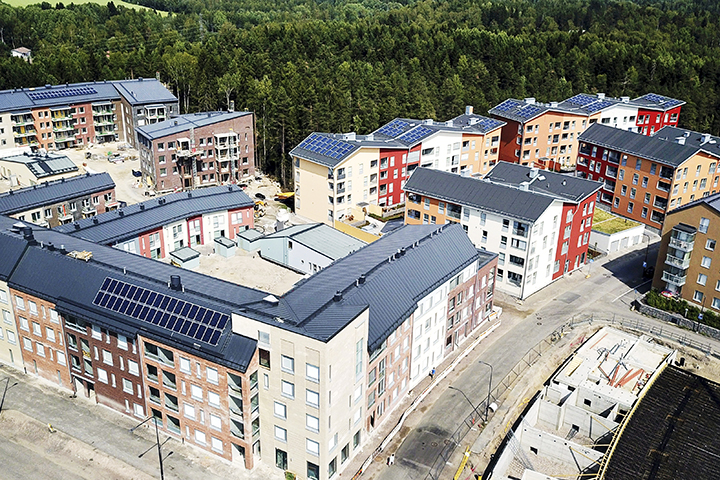
Fingrid’s transmission system centre, which maintains a balanced level of power in the electricity system, plans its actions for the days ahead with the help of electricity consumption and generation forecasts for the upcoming days.
According to Mika Laatikainen, Planning Engineer in Fingrid’s operation planning unit, keeping the electricity system in balance requires forecasts to determine whether there will be enough electricity, enabling generators to react in good time in the event of a shortfall. The transmission forecast is also important.
“The transmission forecast tells us how much electricity will be consumed and generated in various areas and whether we will be able to transfer the necessary electricity between these areas,” he says.
Consumption and generation forecasts are required to provide this information.
The generation forecast is based on the generation plans available from power plants that utilise conventional forms of generation, as well as the forecasts of weather-dependent wind and solar electricity generation.
Wind power forecast constantly updated
The wind power forecast has grown in importance in recent years as wind farms have been built at a frenetic rate. The most important piece of information for forecasting wind power generation is the wind speed.
“The forecasting model contains the coordinates and capacity of every wind farm in Finland. The software uses the coordinates to fetch a weather forecast that is as localised as possible to the wind farm. By comparing the weather forecast with the actual generation figures under equivalent conditions, we are usually able to forecast the output very accurately,” Laatikainen says.
The wind forecast is constantly updated as the wind farms provide Fingrid with their actual generation measurements.
“This helps us to monitor the accuracy of our forecast and improve the model,” Laatikainen says.
Solar power forecast based on capacity and radiation forecasts
Similar reference data is not yet available to support solar power generation forecasts, as the majority of Finland’s solar power systems are connected to domestic electricity meters.
The solar power forecast is based on data provided by the Energy Authority to Fingrid concerning the solar power capacity in the various areas covered by each distribution system operator.
“The forecast is created by combining the capacity data with the hourly forecasts of solar radiation for the specific coordinates.”
According to Laatikainen, Fingrid aims to obtain data on the actual amount of solar power generated, as this will help it to develop its forecasts.
“For example, in Denmark, suppliers of solar power systems provide the transmission system operator with anonymised data on the total amount of electricity generated. This could also be possible in Finland. However, solar power currently accounts for such a small proportion of total generation that we have not deemed this necessary,” Laatikainen says.
Consumption forecasts based on years of data and weather forecasts
Laatikainen says that electricity consumption forecasts have been prepared for a long time, and the forecasts, which are based on data accumulated over several years, are generally reliable.
“The weather forecast is perhaps the most significant individual – and constantly varying – factor in the consumption forecast. The temperature, wind speed and wind chill factor determine how much electricity will be consumed for purposes such as domestic heating.
Other variables that the forecast has learned to take into automatic consideration include industrial loads, which are not dependent on weather conditions, and the effects of weekdays, weekends and holidays.
No manual work is involved in preparing daily forecasts. The forecasts are produced automatically by software that fetches the necessary data from various sources. In addition to its own forecasts, Fingrid also purchases ready-made forecasts.
“It is our job to make sure that the automatic systems that generate forecasts keep running. We also endeavour to improve the accuracy of forecasts over the long term.”






